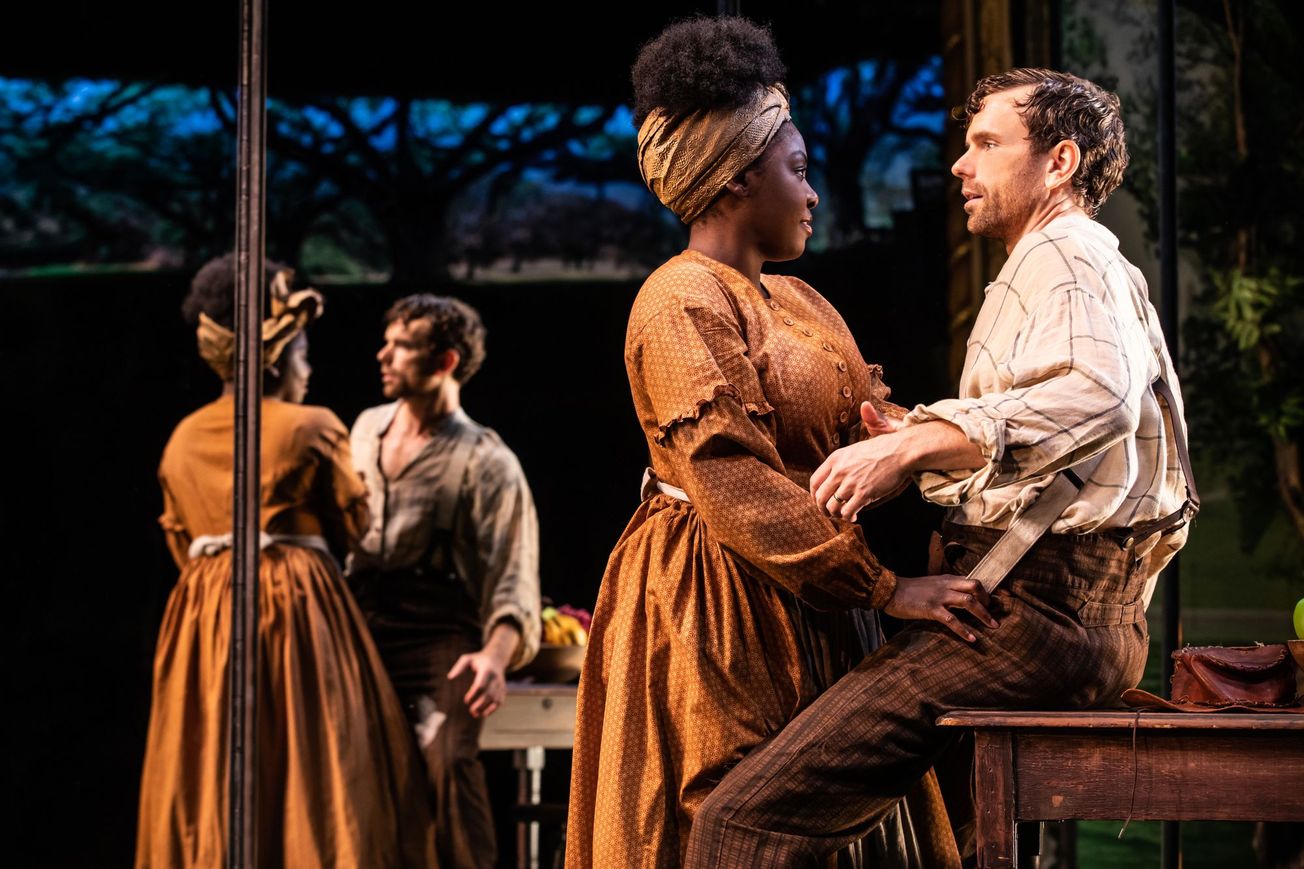Wednesday night’s performance of “Slave Play” will be filmed by the New York Public Library’s Theatre on Film and Tape Archive.
Every year, the Theatre on Film and Tape Archive films 50 to 60 theater productions, including work on Broadway, Off-Broadway and in regional theaters, which are kept for posterity and future research at its Lincoln Center location. “Slave Play” joins a slate of recently filmed Broadway productions including the “Oklahoma!” revival, “A Christmas Carol” and Off-Broadway’s “Little Shop of Horrors,” according to Patrick Hoffman, curator of the Theatre on Film and Tape Archive.
Hoffman decides which productions will be filmed for the archive, based on whether he believes the play will be historically significant or something that regional and international theaters will want to perform. He also looks for productions with innovative direction, as was the case with “Oklahoma!,” as well as noteworthy individual performances, which led to the filming of Glenda Jackson in last season’s “King Lear.”
“The play’s the thing,” Hoffman said. “But we’re also looking at the direction.”
The archive, which dates back to 1970, tends to film more Off-Broadway shows than others due to the innovative and experimental work happening there, Hoffman said. Recently the archive filmed Lucas Hnath’s “The Thin Place,” he said.
When a show is chosen, the archive films one performance with multiple cameras. Crew members have already seen multiple performances of the production leading up to the night of filming so that they are prepared for the action on stage.
At “Slave Play,” Hoffman planned to use three cameras, with the camera operators receiving direction from an editor in a video truck outside the theater. As with all the filmed productions, there will be no post-production editing of the tape, as it is meant to “document accurately what they had on that stage,” Hoffman said.
“This play has opened doors and welcomed new audiences, many of whom thought theater wasn’t for them,” ‘Slave Play’ producer Greg Nobile said in a press release Wednesday. “We are thrilled that Robert’s brilliant production will live in the archive alongside such icons as Albee, Wilson, Sondheim, and Hansberry.”
Recordings then become available for viewing at the library after the production has closed.
The library takes on the cost of recording the productions it chooses. Part of its funding comes from fundraising and grants, with a portion coming from an earmarked Hal Prince endowment fund.
If a show has not been chosen by the archive, producers can ask the library to come film the show and underwrite the cost themselves, Hoffman said.


























































